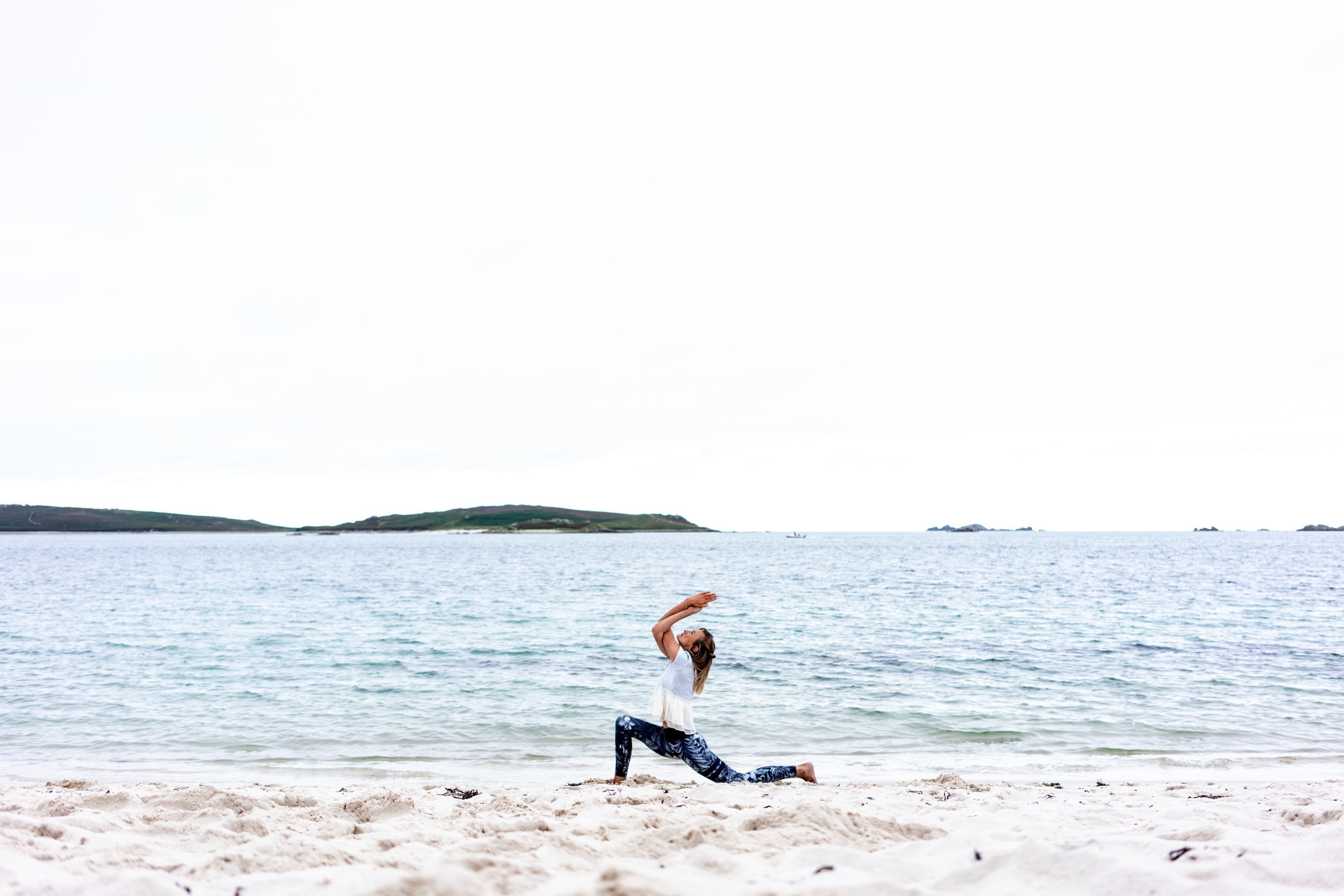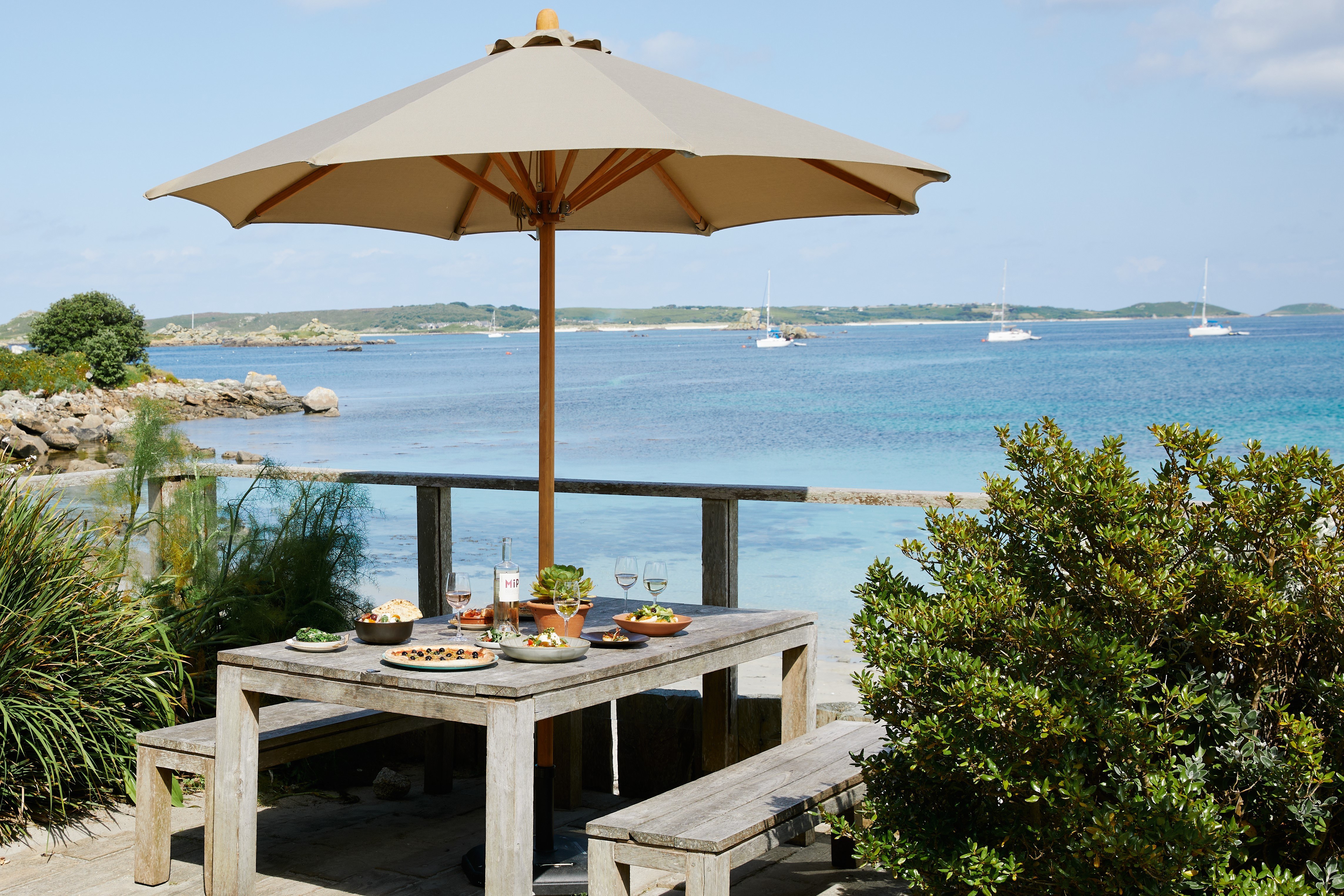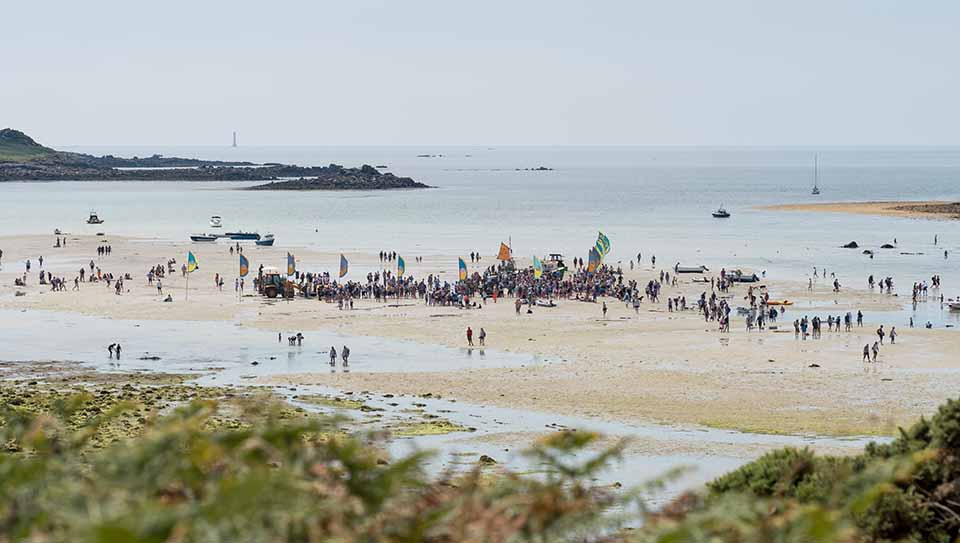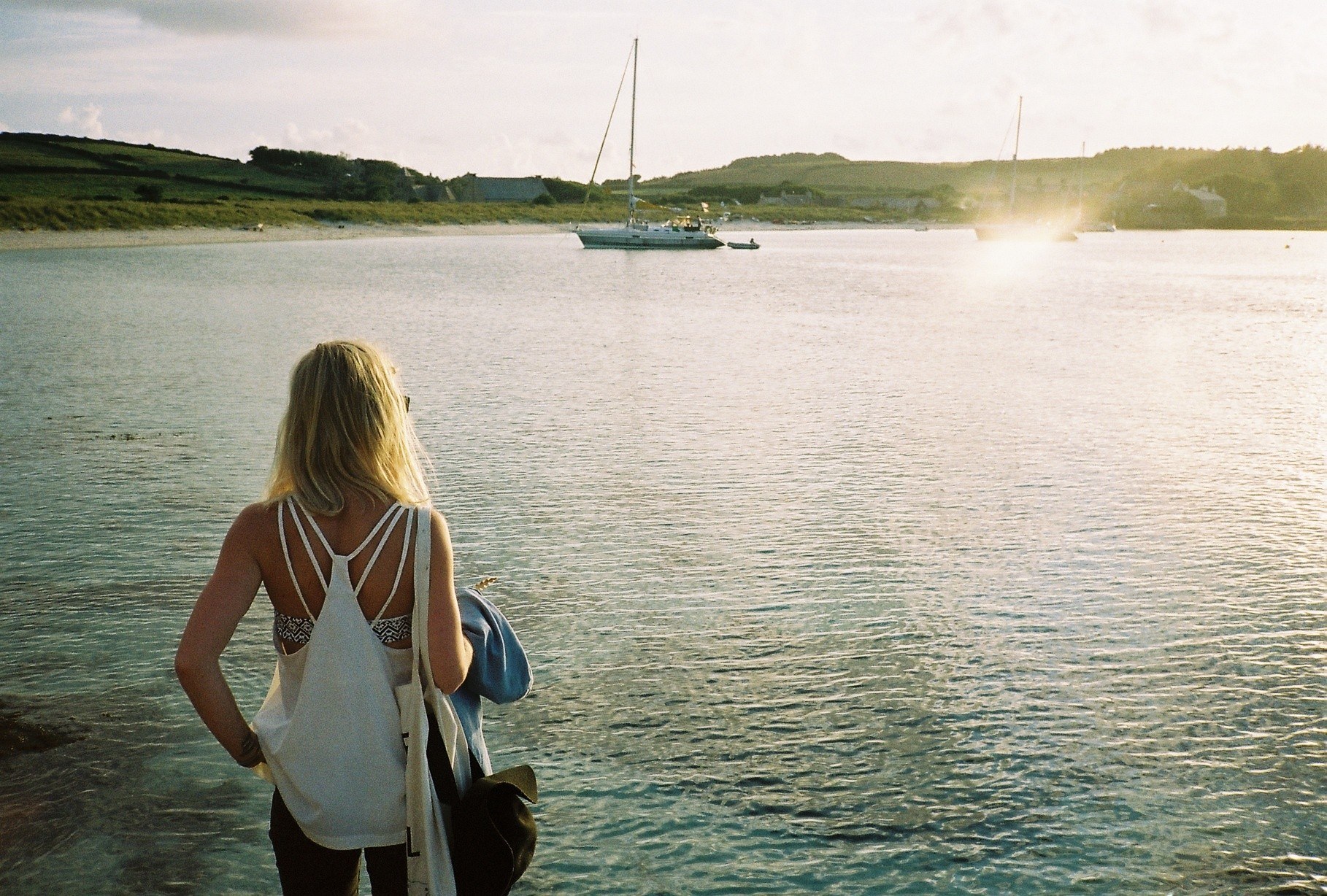Abbey Garden Diaries Feb 2025
Garden Student Holly Doyle on the beauty of February
Tresco Abbey Gardens is a pilgrimage on most gardeners' bucket lists. Being able to spend a year working here is something I still have to pinch myself about to make sure I’m not dreaming. Thanks to the mild, virtually frost-free climate and Augustus Smith’s foresight in planting tall shelterbelts, we are able to grow plants from across the globe. Boasting plants from Mexico, South Africa, South America, Australia, New Zealand, and more, Tresco Abbey Gardens is truly a Mecca for plant nerds.
February in the garden sees the torch Aloes (Aloe arborescens) continuing to light the way from winter into spring and the Camellias carpeting the ground with their immense showers of petals. Remnants of the island's flower farming industry, dating back to the 1870s, rear their heads in the form of yellow and white Narcissus ‘Soleil d’Or’ and N. ‘Scilly White’. Spring has sprung!
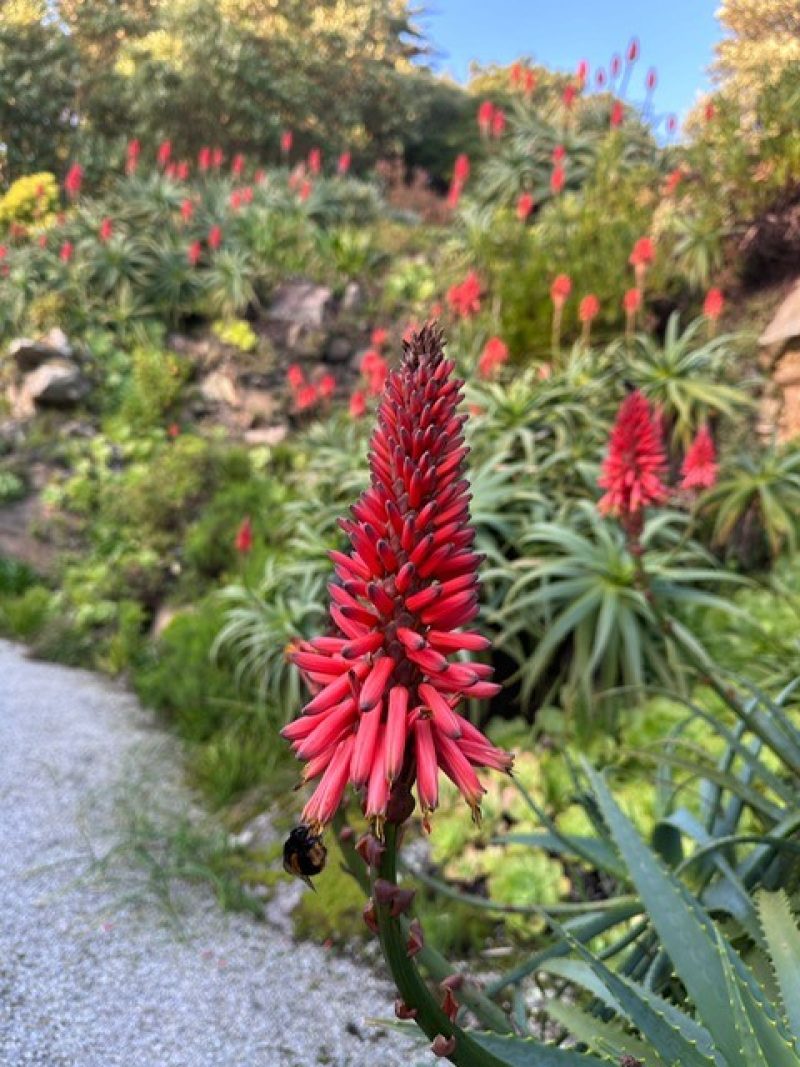
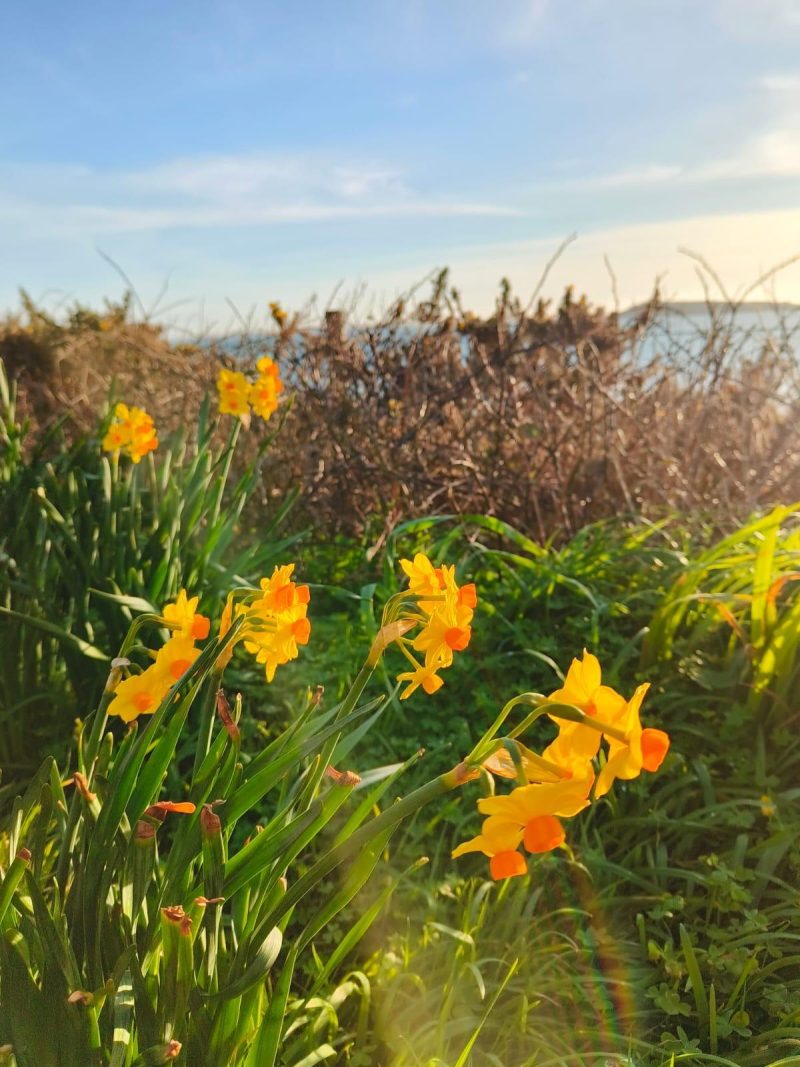
After years of obsessing over sub-tropical plants, I’m constantly amazed by what thrives here—some of which are flowering right now, showcasing the sheer diversity this garden allows.
Hardenbergia violacea, an Australian pea relative, this sprawling purple-flowered climber is endemic to the open forests and woodlands of Eastern Australia. You can find this beautiful species just off the pebble garden, clambering it way up one of the 12th century Abbey walls.
Chasmanthe bicolor, also known as the red and green cobra lily, is native to sheltered ravines and streams in open woodland of the Western Cape. The name Chasmanthe in Latin means ‘gaping mouth’ in reference to its lip-like flowers. Its strappy lime-green leaves have been growing throughout the winter, and its highly anticipated blooms were worth the wait!
Sophora microphylla ‘Sun King’. This species of small-leaved Kōwhai is a native to New Zealand and, surprisingly given the distance, Central and Southern Chile. Its beautiful yellow flowers, contrasting with the glossy, dark green foliage, have been looking particularly lovely.
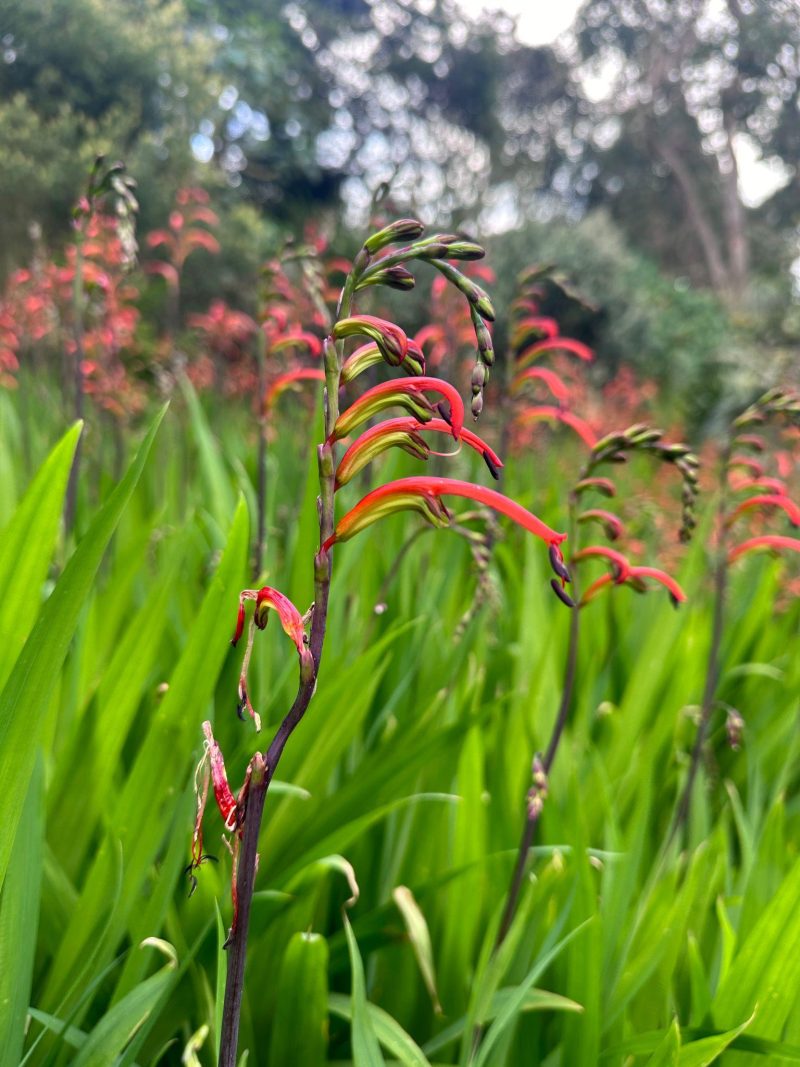
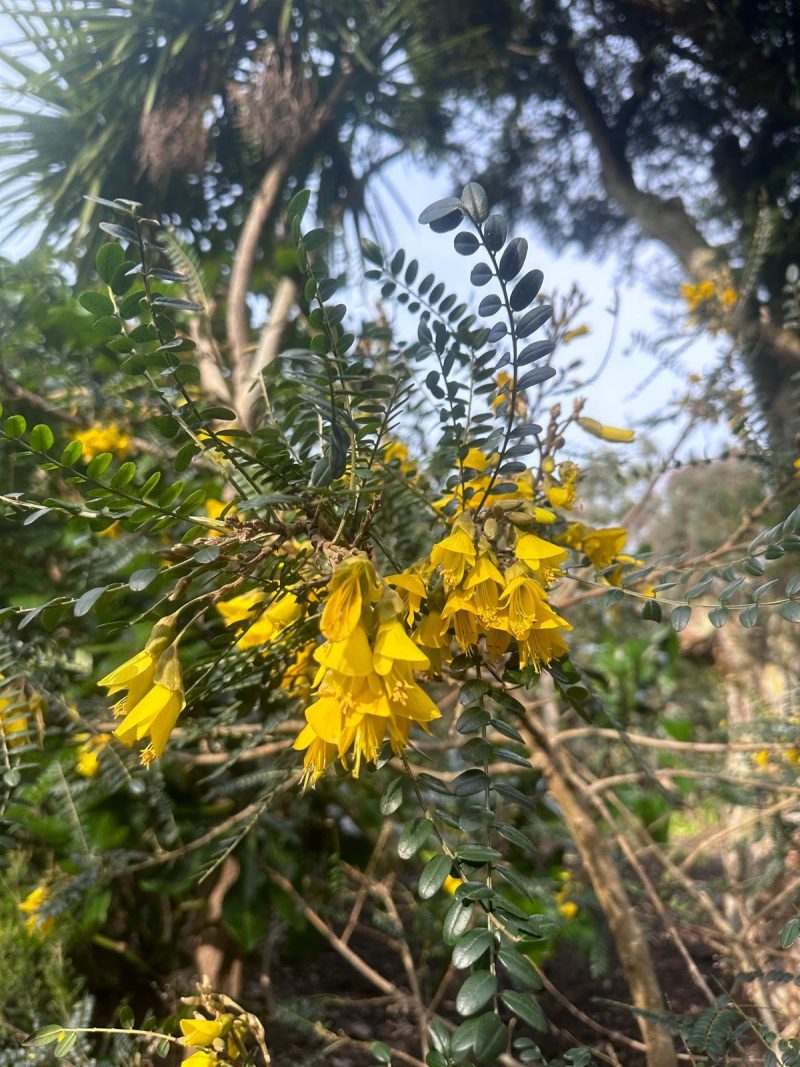
Some of the bush Echiums, native to the Canaries, have started sending out their vibrant blue flowers. A firm favourite with the bees here, Echium pininana and E. webbii have cross-pollinated, resulting in an entirely unique hybrid. This hybrid, Echium x scillonensis—named after these unique Isles—is available as seed from the Garden Visitor Centre when it opens in March.
There are a few early bloomers in the garden this February that should be particularly interesting to those of you who might not get the chance to see them in their main season. Tucked away by the palm circle is a Madeiran native, Geranium maderense. The largest-flowered geranium whose giant leaves die back, their old leaves acting as a support for the new growth.
A patch of Sonchus congestus and Sonchus canariensis, some of the giant sow thistles from the Canary Islands, are flowering now along the old Aloe walk. Their giant dandelion-like flowers made me do a triple take the first time I saw them. I thought the triffids had taken over!
Canarina canariensis, also known as the Canary Island Bellflower, has a sprawling habit that has draped itself like tinsel over the bones of a dormant Fuchsia just off the Long Walk. These spectacular winter-flowering plants are pollinated by passerine birds in their native habitat.
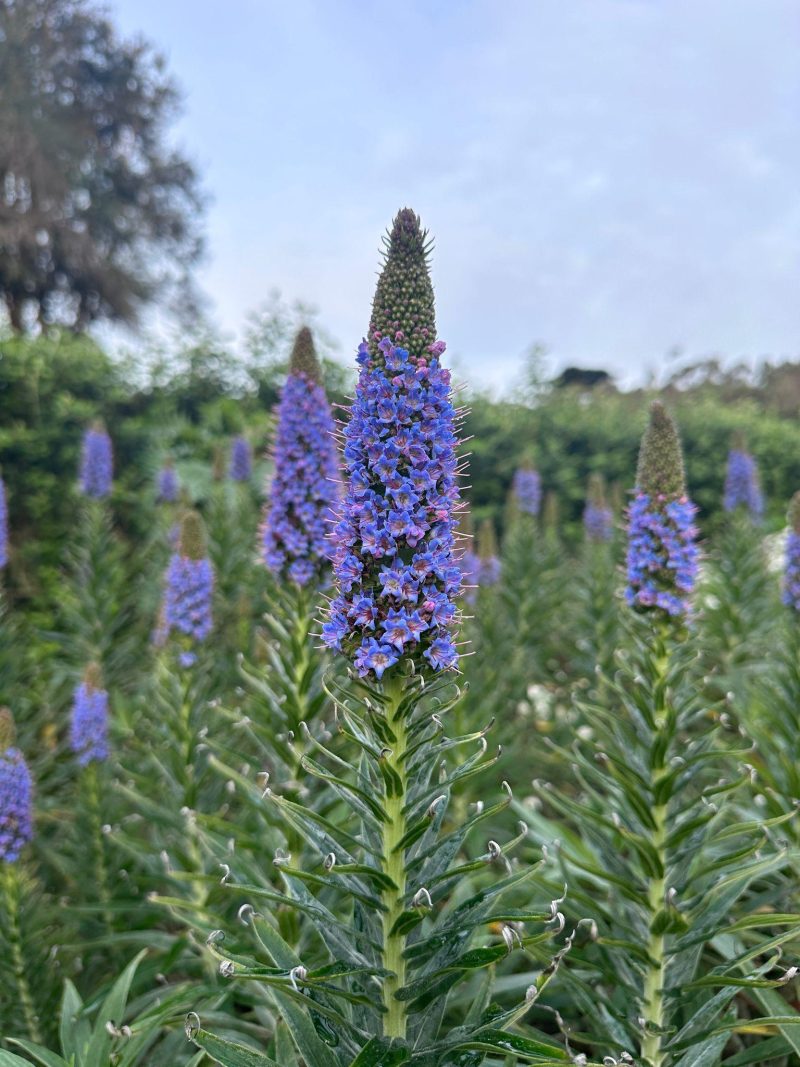
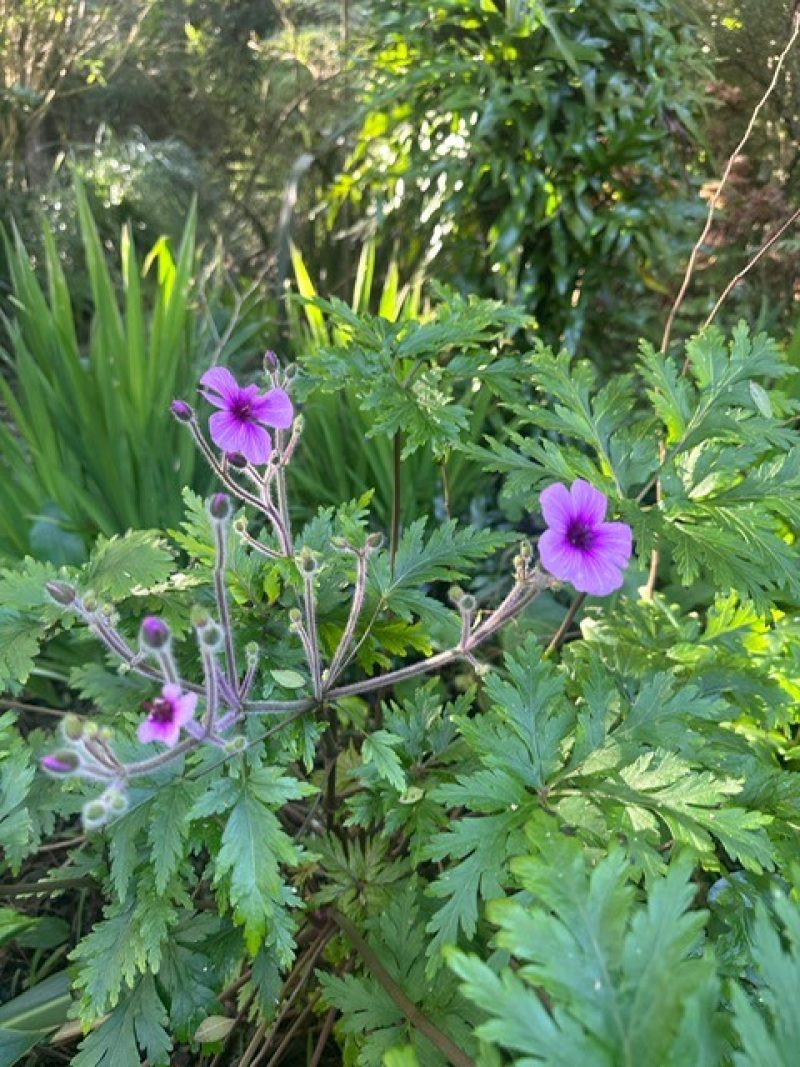
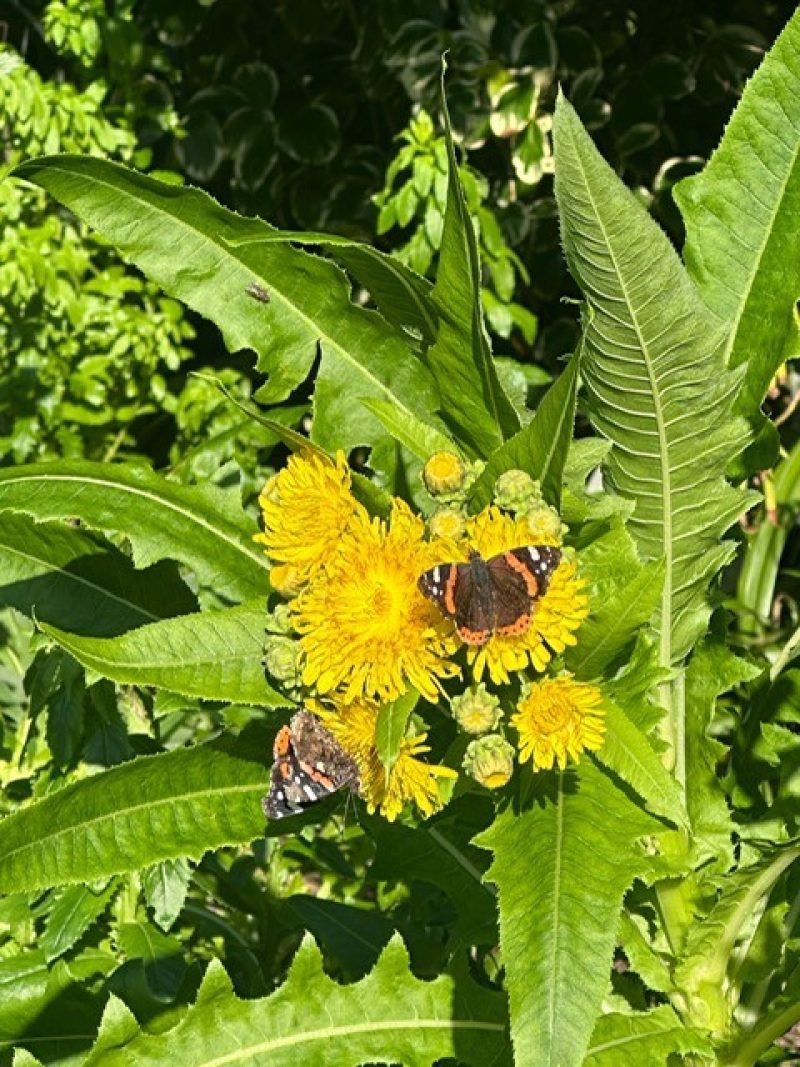
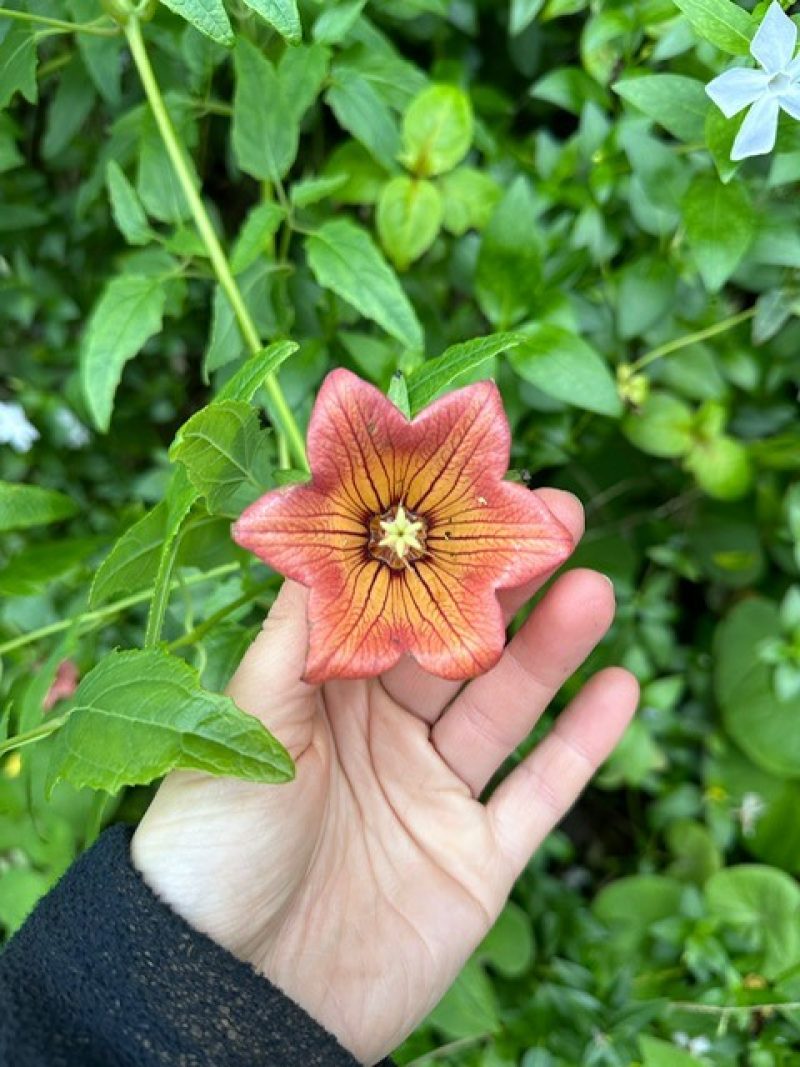
Tresco Abbey Gardens used to have the National Collection of Acacias, and now is the prime time to see them in all their glory. Acacia longifolia, commonly called the long-leaved wattle, is native to Southeastern Australia. This fast-growing tree is in magnificent full-flower in the Eucalyptus field and is well worth going off the beaten track to see.
Keep an eye out for the quintessentially Scillonian Daffodil, Narcissus ‘Soleil D’or’. The islands have everything they need to be a haven for flower farming—the warm breeze from the Gulf Stream, the sandy soil, and not-too-wet weather, complemented by the wild hedgerows that protect the crops. Their sweet scent and golden hue bring a touch of spring indoors—no wonder they’ve been a Scillonian staple for over a century.
As our New Year Flower Count can attribute (267 species in bloom!) there are many, many more floral delights awaiting you in the gardens should you come and visit. As the weather gets warmer and the days get longer I am looking forward to even more shock and awe as I discover what new treasures this garden contains.



